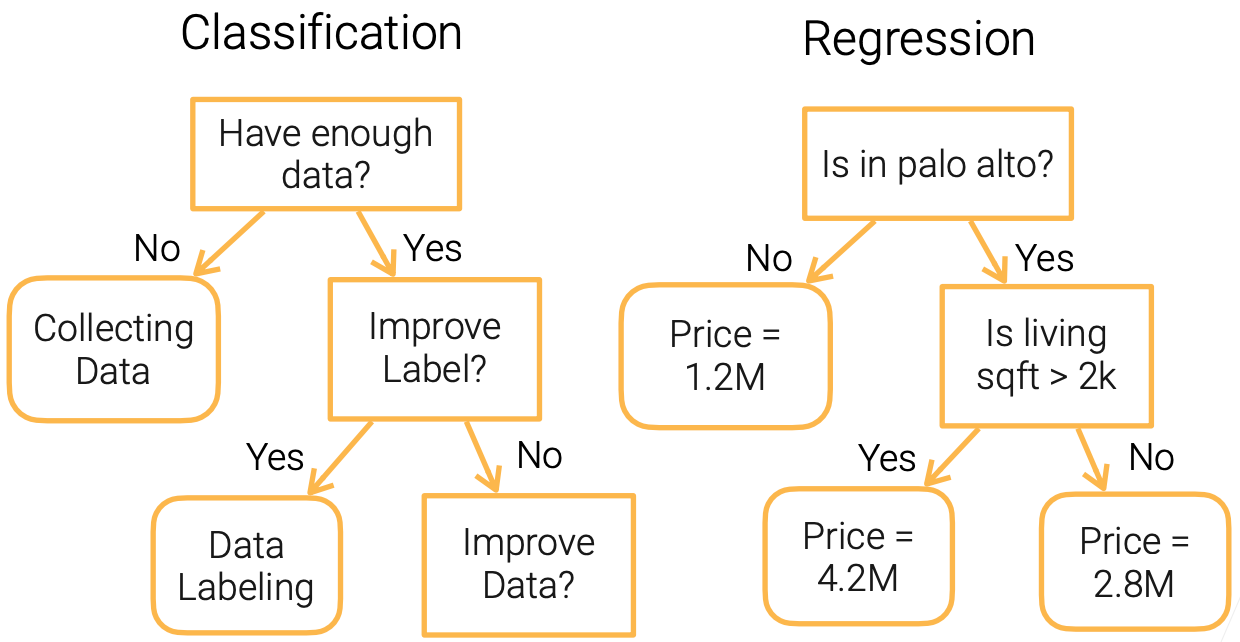Stanford Pratical Machine Learning-决策树
本文最后更新于:7 个月前
这一章主要介绍决策树,Decision Trees用的很广泛啦!!!
Decision Trees
- Explainable
- Handle both numerical and categorical features without preprocessing

- Pros
- explainable
- can handle both numerical and categorical features
- Cons
- very non-robust(ensemble to help)
- complex trees cause overfitting(prune trees)
- not easy to parellelized in computing
Building Decision Trees
- Use a top-down approach, staring from the root node with the set of all features
- At each parent node, pick a feature to split the examples
- Feature selection criteria
- Maximize variance reduction for continuous target
- Maximize Information gain (1 - entropy) for categorical target
- Maximize $Gini\ impurity\ = 1 - \sum_{i=1}^{n} p_{i}^{2}$ for categorical target
- All examples are used for feature selection at each node
- Feature selection criteria
Limitations of decision Trees
- Over-complex trees can overfit the data
- Limit the number of levels of splitting
- Prune branches
- Sensitive to data
- Changing a few examples can cause picking different features that lead to a different tree
- Random forest
- Not easy to be parallelized in computing
Random Forest
- Train multiple decision trees to improve robustness
- Trees are trained independently in parallel
- Majority voting for classification, average for regression
- Where is the randomness from?
- Bagging: randomly sample training examples with replacement
- E.g. [1,2,3,4,5] [1,2,2,3,4]
- Randomly select a subset of features
- Bagging: randomly sample training examples with replacement
Gradient Boosting Decision Trees
对于之前预测不准的结果,再来一棵树进行补充处理!
- Train multiple trees sequentially
- At step t = 1…, denote by $F_t(x)$ the sum of past trained trees
- Train a new tree $f_t$ on residuals: ${(x_i, y_i - F_t(x_i)}_{i = 1, \dots}$
- $F_{t+1}(x) = F_t(x) + f_t(x)$
- Тhе rеѕіduаl еquаlѕ tо $-\part{L}/\part{F}$ іf uѕіng mеаn ѕquаrе error as the loss, so it’s called gradient boosting.
Summary
- Decision tree: an explainable model for classification/regression
- Ensemble trees to reduce bias and variance
- Random forest: trees trained in parallel with randomness
- Gradient boosting trees: train in sequential on residuals
- Trees are widely used in industry
- Simple, easy-to-tune, often gives satisfied results
References
Stanford Pratical Machine Learning-决策树
https://alexanderliu-creator.github.io/2023/08/24/stanford-pratical-machine-learning-jue-ce-shu/